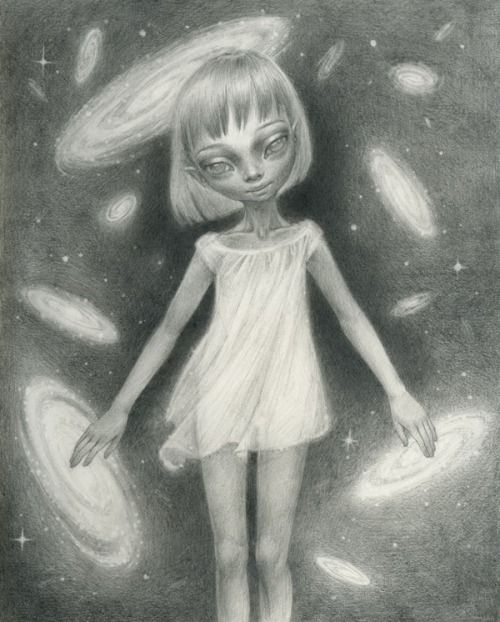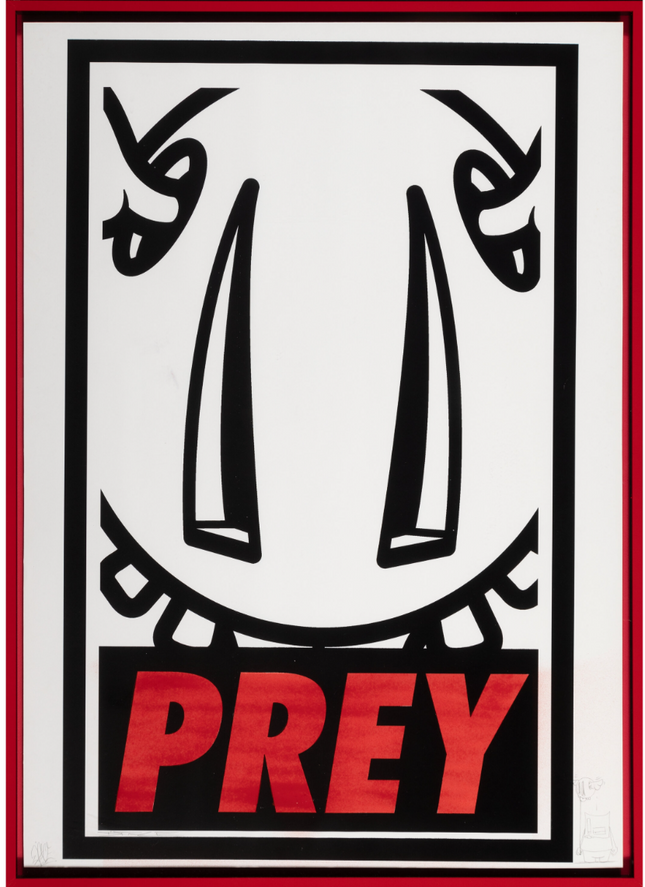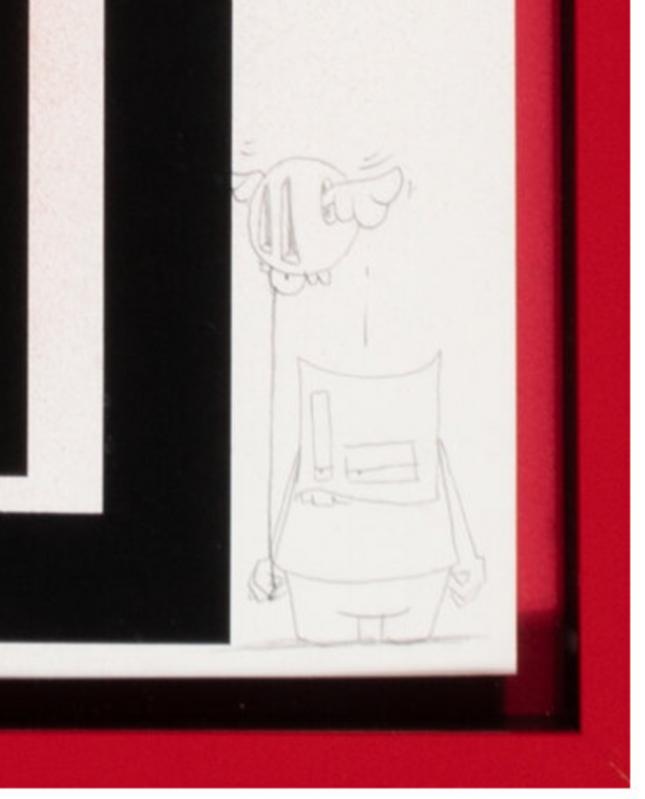
Black & White


D*Face- Dean Stockton Prey Red HPM Doodled Silkscreen Print by D*Face- Dean Stockton
Prey Red HPM Doodled Silkscreen Print by D*Face- Dean Stockton Screen Print on Paperboard Framed Limited Edition Pop Street Art Artwork. 2007 Signed Unique Paint & Pencil HPM Embellished with Doodle on Front Framed Artwork Size 23.25x33. Initially, This Was a Design Used as Wheat Plasters Across Cities. It's Rumored This is one of 2 Versions Produced and Signed by D*Face on higher-grade paper. Custom Framed with Red Metal Frame. D*Face's Signature Style in Prey Red The confluence of pop art and street art finds a striking manifestation in the work of British artist Dean Stockton, better known as D*Face. Among his vast array of impactful artworks, the "Prey Red HPM Doodled Silkscreen Print" is a prime example of his skill in blending subversive street art techniques with the ethos of pop art. This limited edition piece, a silkscreen print on paperboard and an original work embellished with unique paint and pencil doodles by the artist himself captures the essence of his critique on consumerism and the cult of celebrity. Stockton's "Prey Red HPM Doodled Silkscreen Print" is not just another piece of street art; it reflects the artist's journey and commentary on society. The artwork features bold lines and stark contrasts, a hallmark of D*Face's aesthetic, which owes much to his early influences from skateboarding, graffiti, and punk music. The print, measuring 23.25 by 33 inches, is framed in a custom red metal frame that echoes the vibrancy of the artwork within. D*Face and the Pop Street Art Movement Originally conceived as a design for wheatpaste posters plastered across cities, "Prey Red" evolved into a more refined expression of DFace's art when it was reimagined as a high-grade paper print. This transition from street art to a gallery-worthy piece underscores the fluid boundaries between different art forms and the versatility of DFace as an artist. The fact that this piece was one of just two versions produced and signed by the artist adds to its exclusivity and allure. DFace's work is often seen as a bridge between the raw, rebellious energy of street art and the polished, image-focused world of pop art. DFace challenges preconceived notions about art and its place in society by bringing his work into galleries without losing the street-smart edge. The "Prey Red HPM Doodled Silkscreen Print" is a testament to this, embodying the artist's skill in bringing depth and multiple layers of meaning to his work. The Cultural Impact of D*Face's Artwork Beyond its visual appeal, "Prey Red" is a cultural critique, much like the rest of DFace's oeuvre. Through his art, DFace invites viewers to question the icons and symbols that populate our visual landscape. This print, with its sharp imagery and the word "PREY" emblazoned across it, suggests a deeper conversation about who the prey is in a world saturated with media and celebrity culture. DFace's "Prey Red HPM Doodled Silkscreen Print" is not merely a piece of art to be admired for its style; it is a conversation starter, a piece of cultural commentary, and a collector's item all at once. It represents the artist's ongoing commitment to challenging viewers and the art establishment, urging a reevaluation of what is displayed on city walls and gallery halls. As DFace continues to create and evolve, works like "Prey Red" ensure his place in the annals of contemporary art history, bridging the gap between the underground and the mainstream.
$4,500.00



